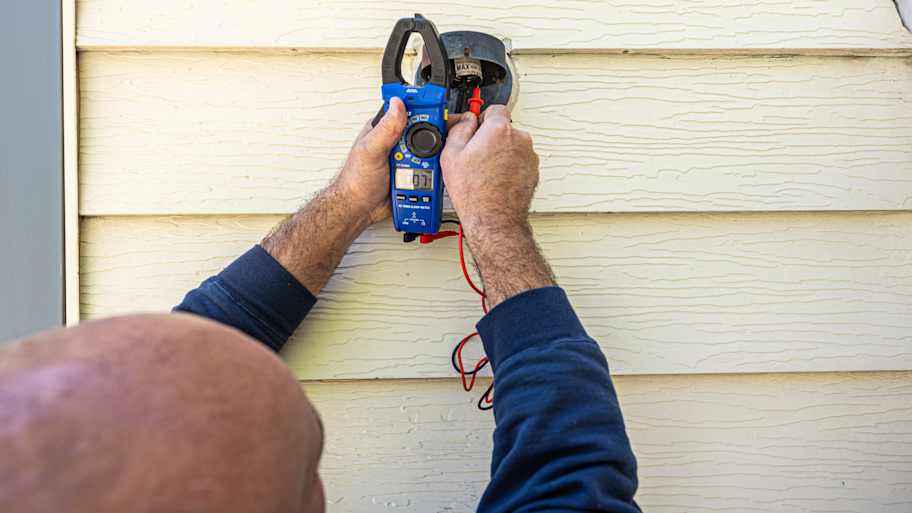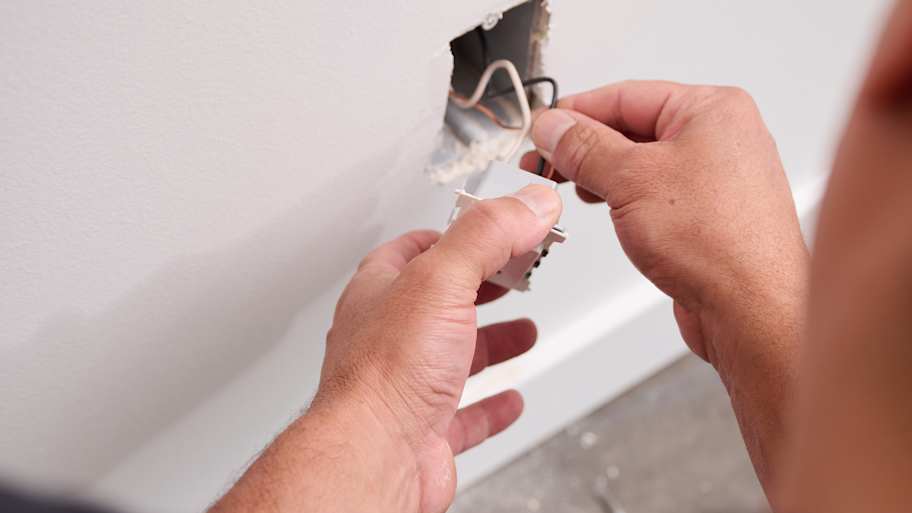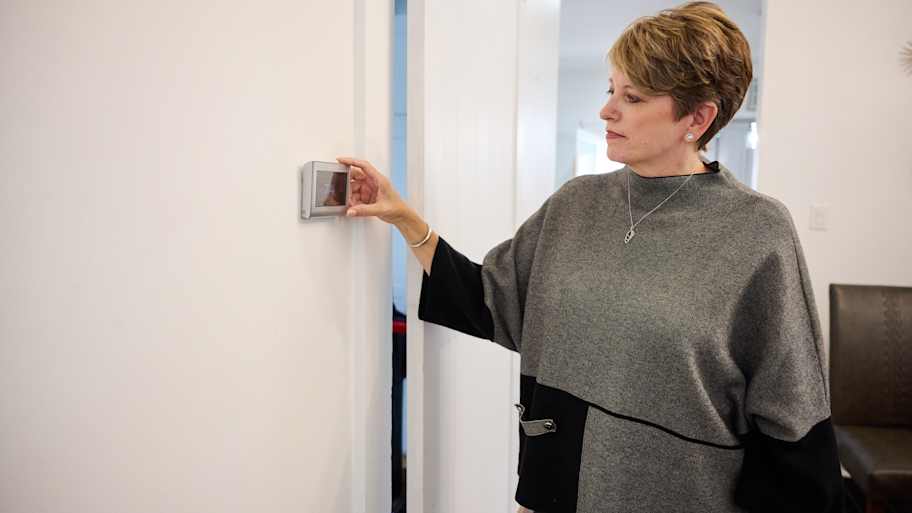Electrical Codes for Kitchen Counter Outlets, Explained
Electrical codes for all your kitchen outlet needs


Kitchen counter outlets must be rated for 20A, 120V.
Counters should have outlets within 24 inches reach.
Kitchen outlets must be GFCI and tamper-resistant.
The NEC requires electrical outlets be installed in a kitchen that has a sink 12 inches wide and 24 inches deep.
Did you know your kitchen is most likely using more electricity than any other room, even a large gaming room or a living room with a home theater? That means power management is even more important: That’s why the National Electric Code (NEC) has special electrical codes for outlets in the kitchen.
If you’re planning on a kitchen renovation, or want to add new outlets to a kitchen, it’s important to know the details of the outlet codes set by the NEC. We’ll cover everything you need to know about electrical codes for kitchen counter outlets.

What Are Kitchen Electrical Codes?
Electrical codes in the kitchen dictate the type of wiring, circuits, and outlets the kitchen should use, including the amps for major appliances like dishwashers and refrigerators. These codes also set requirements for the power and protection that kitchen counter outlets need when first installed.
Local electricians with licensing and experience will keep updated on the latest NEC kitchen codes. However, you can benefit from knowing them, too. Outlet codes help owners make informed decisions about outlet placement, expected costs, and more.
Code Requirements for Kitchen Counter Outlets

Amps and Voltage
Kitchen counter outlets must generally support:
20 amps (20A)
120 volts (120V)
Please note this is an exception compared to many outlets in the house. Most other residential outlets are only required to be 15A. Codes bump the amps in the kitchen because the outlets in that room are much more likely to power small appliances. Those items can include countertop devices like mixers, coffee makers, breadmakers, toasters, or any device that typically has higher amperage requirements.
GFCI Outlets
Kitchen counter outlets must have ground fault circuit interrupter (GFCI) capabilities. A GFCI outlet helps protect against ground faults, a serious accident where electrical current surges into an unexpected pathway and can cause damage or serious physical harm. The GFCI outlet snaps off the electrical current if it detects any strange amp variations, preventing these kinds of faults. Ground fault risks rise in areas exposed to lots of water and moisture, like kitchens and bathrooms, which is why codes require them in these areas.
GFCI outlets must also be tamper-proof, meaning they have built-in protection against shocks from sticking a fork in an outlet or other accidents. Tamper-proof designs are also very common and typically included in GFCI outlets. The NEC makes an exception for outlets more than 66 inches above the floor, which aren’t as easy to reach.
Number of Kitchen Outlets
The number of outlets required in a kitchen varies depending on the size of your countertops. As a general rule, any spot on the counter shouldn’t be more than about 24 inches from an outlet, which is the length of average counter appliance cords.
Kitchen countertops should have one outlet installed for the first 9 square feet of space, and an additional outlet for every additional 18 square feet of counter. Those measurements are useful to keep in mind when planning a remodel. Most small kitchen counter sections will require their own outlet. If a counter is at least 12 inches wide, it will need its own outlet.
Spacing of Kitchen Outlets
When spacing kitchen outlets along a wall, they should be no more than 48 inches apart. Following this 48-inch rule in a kitchen redesign, should ensure that the “24-inches from any place on the counter” rule is also followed.
Additionally, outlets should never be placed where large appliances like a refrigerator will block them, unless they’re specifically intended to power those appliances.
Kitchen Islands
So far, we’ve focused on counter space that’s running alongside a wall. What about the increasingly popular kitchen island?
Codes are very similar for these counter spaces, too. As long as the island has a counter at least 24 inches wide, it must have at least one outlet. The rule about having an outlet for every 9 square feet of counter space and every 18 square feet afterward also applies. Without nearby walls, outlets must use pop-up receptacles on the surface of the counter.
How Much Does It Cost to Install a New Kitchen Outlet?
On average, installing a new kitchen outlet costs about $300 per outlet, including the expense of labor and materials. Most homeowners will pay between $75 and $485 per unit to install new outlets for their kitchens.
In many cases, outlets are packaged into an overall kitchen remodel. Small kitchen remodels range between $14,000 and $41,000, including the cost of installing outlets that adhere to NEC codes.
Frequently Asked Questions
Yes, the National Electrical Code reviews household codes every three years. However, that doesn’t always mean that kitchen counter outlet requirements will change, but it does allow room for professionals to make updates. That’s why many older kitchens are no longer code-compliant thanks to changing rules for amperage, GFCI protection, and more.
Updating outlets is a common part of kitchen remodels. You can ask your remodeler for more information, but sellers are required by law to add the latest electrical code compliance when making sizable renovations to their kitchens, including adding GFCI features and putting in new outlets for additional counter space.
The NEC requires electrical outlets be installed in a kitchen that has a sink 12 inches wide and 24 inches deep. According to the code, that outlet must be within 2 feet of the kitchen sink. Bathrooms must have at least one electrical outlet, it must be GFCI, and it must be within 3 feet of the bathroom sink.
Yes, states and local governments can have additional building codes that address kitchen outlets. In most cases, these kitchen outlet codes simply refer to the NEC. However, states or local municipalities can have separate requirements for electrician licensing, such as requiring a permit to make big changes, and other details.
No, there aren’t additional code requirements for kitchen lights. Kitchen lights and other electrical circuits in the kitchen have different code requirements. Outlets need to be particularly robust because of their frequency of use and proximity to liquids. If you need help determining where to install outlets in your kitchen, consult a local electrician who can ensure that placement is functional and up to code.





- Home Generator Repair
- Lamp Repair
- Electric Repair
- Generator Installation
- TV Antenna Services
- Emergency Electricians
- Commercial Electricians
- Attic Fan Installation
- Attic Fan Repair
- Exhaust Fan Installation
- Electric Inspectors
- Subcontractors
- Electrical Construction
- EV Charger Installer
- Chandelier Installation
- Doorbell Installation
- Bathroom Fan Installation
- Ring Installers
- Electrical Panel Upgrade
- Don’t Know Where to Put Electrical Outlets? Check Out These 8 Ideas
- 12 Electrical Outlet Types You Can Find in Your Home
- What Is a GFCI Outlet and How Does It Work?
- Do Kitchen Islands Need Outlets? Yes, and Here’s Why
- Does a GFCI Outlet Need to be Grounded?
- 4 Ways to Fix Bathroom Outlets That Are Not Working
- How to Ground an Outlet Without a Ground Wire
- What to Know About Childproofing With Tamper-Resistant Outlets
- How to Fix an Outlet That Stopped Working When the Breaker Has Not Tripped
- How to Fix Loose Outlets: A Step-by-Step Guide










